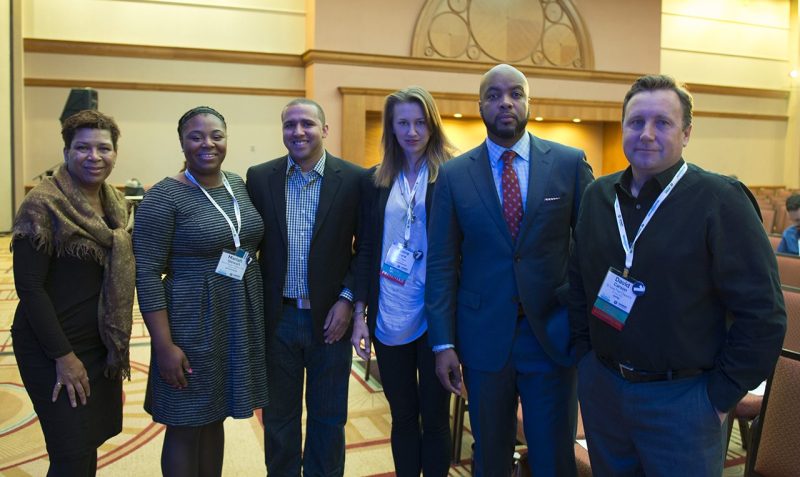Two days before Michael Brown was shot to death in August by a police officer in Ferguson, Missouri, Mariah Stewart moved to her new home only 10 minutes away from where the shooting would occur.
She quickly went to work.
“I wasn’t attached to any news organization at the time,” Stewart said. “But as a journalist it was news, so I went down there and collected interviews, took photos and really absorbed the atmosphere there.”
The shooting of the African-American Brown, 18, by a white police officer outside of an apartment building resulted in sometime violent protests and tense interactions between police and Ferguson residents. The events quickly captivated the national media.
Stewart was one of five journalists featured Thursday on the “All Eyes on Ferguson, Mo.” keynote panel at the 2014 Online News Association Conference in Chicago.
NPR host Michel Martin moderated the panel, which also featured Washington Post reporter Wesley Lowery, St. Louis Post-Dispatch photographer David Carson, VICE producer Claire Ward and MSNBC’s Trymaine Lee.
Social media changed the dynamic of the story.
“As journalists, we cover disparities and inequities in communities all the time, and people don’t seem that outraged,” said Lee.
“To see young people primarily on social media spreading the word, taking to the streets … then the very violent response you saw … all played a role in spurring [the coverage].”
“I Was Never Scared of the Protesters”
The Washington Post’s Lowery became part of the story when police arrested him and Huffington Post reporter Ryan Reilly for not leaving a nearby McDonald’s quickly enough when asked to leave, according to the reporters’ early accounts of the arrests.
Lowery’s concerns ran deeper than being arrested.
“I thought the police were going to kill us,” said Lowery. “I never thought I was going to be arrested. I was never scared of the protesters.”
Lowery was thrust into the media spotlight with his arrest—and he was even criticized by MSNBC anchor Joe Scarborough for not following police instructions. Lowery said being part of the story—and the resulting media attention—taught him a lot.
“You do start to figure out a little bit better who your friends are and who your friends are not,” Lowery said in an interview after the panel. “That in some ways has been an illuminating experience, not just friends and not friends, but people who want to take advantageous cheap shots, and people who are actually interested in real dialogue.”
Local Versus National Media
The role of local versus national media in situations like the one in Ferguson was also discussed.
“As a local media member, my fear is that we are going to be beat by the national media,” said Carson. “I want us to own this story.”
Carson said he first arrived at the shooting scene as Brown’s blood was being washed off the street. After that, it was non-stop coverage.
But national and local media outlets approach stories differently, and the Ferguson shooting and later protests were no exception.
“Being local, we have a sensitivity toward the community, and it is hard for us to emotionally remove ourselves from the situation,” Stewart said. “I feel most national people they come in … they know what kind of story they want to get, and it actually entices the protesters, and changes the story altogether, just from their presence.”
Immediate Feedback
While the media can become intrusive, VICE News producer Claire Ward agreed they also have an important role to play.
“We started to hear from community members that they were watching our live stream,” said Ward, who helped produce longer form videos from Ferguson for VICE News. “That was the first time in my career where I got immediate feedback from the community I’m reporting on.”
The story that came out of Ferguson is not over, the journalists said.
“There are so many communities like this across the country,” Lowery said. “Newsrooms that care about stories like this are going to quickly tell stories like this.”




